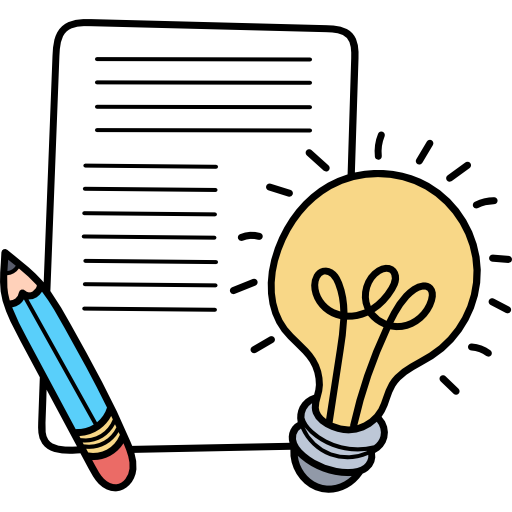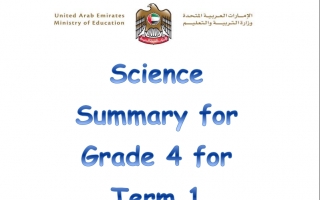أوراق عمل مراجعة علوم منهج انجليزي صف رابع : نقدم اليكم في هذا الملف مجموعة من أوراق العمل الهامة والتي تتضمن عدد من الاسئلة والتدريبات الشاملة ، من منهج علوم الصف الرابع ، ايضا، وقد تم تصميم هذا الملف لمساعدة طلابنا الاعزاء، في دراستهم و تحضيرهم للامتحان النهائي بشكل متكامل.
Lesson 1 : Be a Scientist
Scientific method: is a process that scientists use to answer questions
Variable : is something that changes or varies
A hypothesis : statement that can be tested to answer questions
An experiment : is a scientific test that can be used to support a hypothesis
Make observation
Ask a question
Drew conclusions
Scientific
method
Form a hypothesis
Test your hypothesis
Chapter 2 Lesson 1: Cells
Cells : the smallest unit of living matter
Trait : a characteristic of a living thing
Kingdom : the largest group into which organisms can be classified
Spore : one of the cells in a seedless plant that grows into a new organism
Photosynthesis : the process by which plants use the sun's energy to make food from water and carbon dioxide
Oxygen : a gas in air and water
Organism : is a living thing that carries out five basic life function or jobs
Living things function
* reproduce * growe
* use food for energy
* react to changes
* get rid of wastes
Chapter 3 : The Animal Kingdom
Muscular system : the organ system made up of muscles that move bones
Digestive system : the organ system that breaks down food for energy
Heredity : the passing of traits from parents to offspring
Metamorphosis : a life cycle including four stages of growth : egg, larva, pupa and adult
Lesson 1: System in Animals
A system : is a group of parts that works together
. The skeletal system
Consist of bones
Supports an animal body
protect the organ inside
2. The muscular system
Consist of muscles
to move
pull on the bones
. The nervous system
( the master control system of the body )
Consist of nerve cells, brain, spinal cord and sense organs
help animals use sense ( sight, hearing, taste, touch and smell
to detect changes in their surroundings
The respiratory system
Consist of gills or lungs to exchange gases with the water or the air
- brings oxygen to the blood and removes
carbon dioxide gas from the blood
The circulatory system
Consist of the heart, blood and blood vessels
to move blood through the body
The blood carries oxygen, food and water to the body's cells
Fish heart has two chambers An amphibian heart has two chambers Mammals and birds heart have four chambers
Sponges and cnidarians do not have hearts
The excretory system
Consist of *the liver and kidneys filter wastes from the blood
* the bladder stores liquid wastes
* the skin sweats to remove excess minerals
* lungs and gills remove waste gases from cells
they produce wastes
The digestive system
Consist of ( mouth - stomach - liver - intestine ) in mammals
- break down food for energy
Lesson 2 : Animal life cycle
The stages of growth and changes
. birth
. growth
. reproduction
. death
life cycle : the stages of growth and changes make up an organism. Life span: how long it can usually live in the wild
Metamorphosis : has several separate growth stages
A clone : is an exact copy of its parents
Heredity : the passing of inherit traits from their parents
An egg : the female cell
A sperm : the male cell
Tropism : the response of a plant to something in its environment
Accommodation : an individual organism's response to changes in its ecosystem
Extinct : when the last of a species dies
Variation : are differences among members of the same species
Natural selection: an organism with favorable variations is well suited to its environment
An extinct : species no longer exists. Species become extinct because they cannot adapt
Echolocation : the returning echoes tell the bat where the food is located
Lesson 2 : Animal Senses
How do animals use their senses
Learned about the world around them
Help them stay safe
Help them find food
Find others of their own kind
Move around
How do senses help animals survive
Sight : Owl: have a large eyes that help them see pray in the dark
Housefly : its eyes made up of thousands of tiny eyes. This allows them to see movement in any direction
Hearing : bats: the returning echoes tell the bat where the food
Smell : Dogs : leave scent when they walk or mark their territory to tell others to stay away
Mosquitos : use their sense of smell to find mammals
Taste : Butterflies : use their sense of taste to find a plant is a good to lay eggs
Touch : Earthworm sense vibration in the ground
Lesson3 : Plants Adaptation with Their Surroundings
A stimulus : is something in an environment that causes a living thing to respond
A tropism : is the response of a plant to something in its environment
How does a plant react or respond to a stimulus
. Light: plants growing towered the source of the light
. Water : plants growing their roots towered the water source
Gravity : the roots of plants grow downward the same direction as the pull of gravity. The stem grow upward, away from gravity
. Chemical : plants use chemical to grow
. Heat : plants use heat to grow
What are some plant adaptations
A cactus : it has soft tissue that holds water-it
has a thick, waxy cover to keep the water inside
Cold winter : plants lose their leaves to protect them from drying out. Trees uses stored food
In spring : tree grows new leaves and begins storing food for the next winter.
Chapter 5 : The Health of Living Things
Nutrient : substance in foods that your body needs for growth, repair, and for energy
Balanced diet : meals and snacks that provide the proper amounts of foods from each food group daily
Carbohydrate : a nutrient your body uses as a main source of energy. Protein: a nutrient needed for growth and repair of body tissues
Hygiene : the practice of keeping clean
Physical fitness : the heart, lungs, muscles, and other body parts are all working at their best
Vitamins : are nutrients that help your body grow and carry out certain function
Minerals : are another type of nutrient that help your body grow and function properly





